On July 1, 2025, Vietnam’s Ministry of Health issued Circular No. 30/2025/TT-BYT providing updated guidance on the application of drug quality standards, testing of drugs and pharmaceutical ingredients, and procedures for the recall and handling of noncompliant drugs (Circular 30). Circular 30 officially came into effect on the same day and replaces Circular No. 11/2018/TT-BYT and its amendments.
Key highlights of Circular 30 are presented below.
Drug and Pharmaceutical Ingredient Quality Standards
Circular 30 maintains consistency with previous regulations regarding the selection of an applicable quality specification. Pharmaceutical businesses and drug preparation establishments may still choose to apply standards from the Vietnamese Pharmacopoeia, reference pharmacopoeias (including the United States Pharmacopoeia, the European Pharmacopoeia, the British Pharmacopoeia, the Japanese Pharmacopoeia, and the International Pharmacopoeia), or an in-house specification.
Priority is given to the Vietnamese Pharmacopoeia and reference pharmacopoeias, encompassing quality indicators, quality levels, and testing methods. If alternative pharmacopoeias or in-house specifications are used, they must meet the requirements outlined in the corresponding monographs of the Vietnamese or reference pharmacopoeias.
At the time of registration, the quality standards of drugs and pharmaceutical ingredients must comply with either the current version of the pharmacopoeia or a previous version of the pharmacopoeia that is no more than two years older than the current version.
The requirement for updating quality specifications in line with the quality under the corresponding pharmacopoeia also applies to products that have already been granted marketing authorization.
Testing Drugs and Pharmaceutical Ingredients in Quality Management
Similar to the regulations under the previous circular, if pharmaceutical businesses disagree with the sample testing results, they may, within five working days of receiving the test report, request that the state quality inspection authority designate an alternative testing facility.
The testing period for establishments listed as foreign drug manufacturers with quality violations remains largely unchanged. However, Circular 30 reduces the mandatory testing duration from 12 months to 6 months for manufacturers with two batches classified as having Level 3 quality violations.
Newly added under Circular 30, vaccines and biological products such as antibody-containing sera and blood/plasma derivatives must undergo testing before being released to the market. In addition to the National Institute for Control of Vaccines and Biologicals, businesses may submit samples to other designated testing facilities listed by the Drug Administration of Vietnam (DAV).
Circular 30 introduces provisions for exemption from one or more pre-market testing procedures for vaccines and biologicals (excluding first-time imports). For example, non-injectable vaccines and biologicals imported from countries with stringent regulatory authorities (SRAs) may be exempt from pre-market testing procedures, while injectable vaccines and biologicals imported from SRA-member countries may be exempt from testing one or multiple quality indicators.
Recall and Handling of Noncompliant Drugs
Circular 30 clearly defines the roles and responsibilities of the provincial and municipal health departments in receiving information and handling noncompliant drugs in the area.
The voluntary drug recall process has also been revised. Specifically, after detecting a drug that violates or shows signs of violating quality standards, and assessing and determining the severity of the violation, pharmaceutical businesses are now permitted to initiate a recall without prior approval from the DAV. They may proceed to recall the affected drug, notify the distribution and usage establishments that received it, and conduct the recall. These actions can be carried out in parallel with submitting a report on noncompliance to the DAV that includes information related to the violations, the self-assessed violation level, and the scope of the recall. This represents a significant shift from the previous procedure, which required businesses to wait for official approval before initiating a recall.
Outlook
Circular 30 is expected to have a significant impact on pharmaceutical businesses and drug preparation establishments. These entities should carefully review the document to facilitate their activities and to ensure compliance with Vietnamese regulations.


